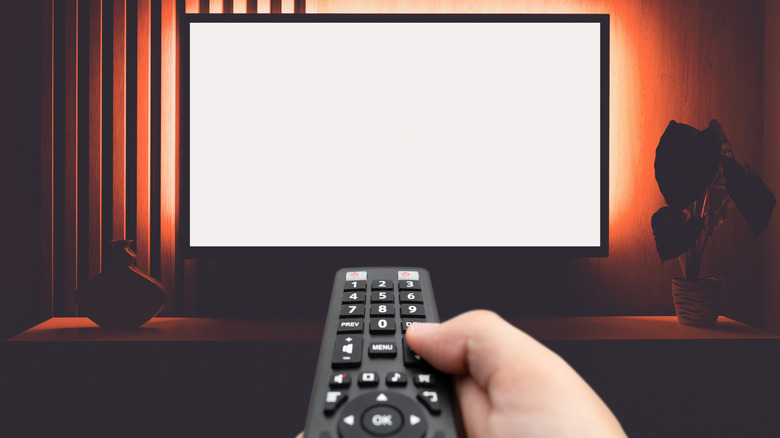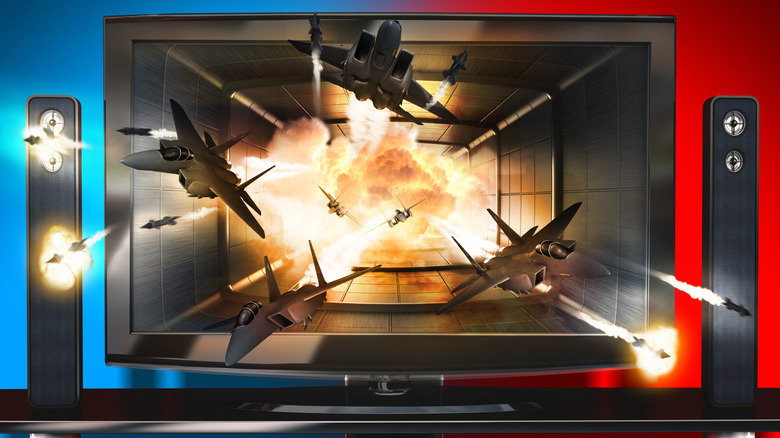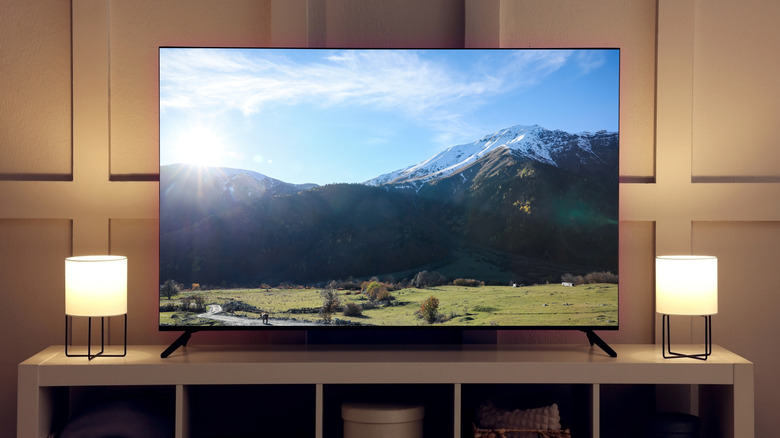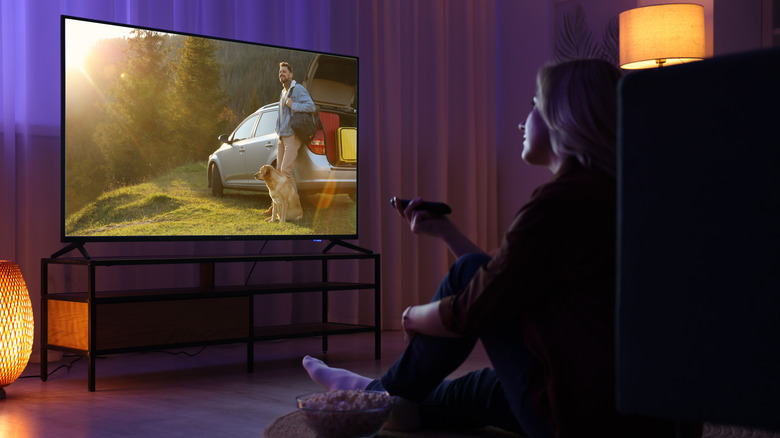Changing These 5 Settings Will Immediately Make Your TV Look Better
It's not an overstatement to claim that televisions are smarter than they have ever been. Interestingly, they are also cheaper than ever, with even some higher-end brands selling for less than the price of a PC monitor. Despite the many advancements that have made televisions, well, more than just a television, they still require a fair amount of fine-tuning to deliver the best possible picture.
The word "best" is, of course, quite subjective when it comes to how images appear on your television. Beauty is, after all, still very much held in the eye of the beholder, and one might reasonably argue that no two viewers like their picture on the TV to look exactly like the other. Thankfully, fine-tuning the picture on your television is a relatively easy task, as most manufacturers allow users to alter the image through any number of built-in menu features.
Even still, in the era of the smart television, scrolling through those picture menu options can be a little confusing, if not outright intimidating. But if you're just looking for a good place to start, adjusting these settings could quickly improve the picture quality on your television.
Motion Smoothing
If you're looking to change the picture of your television, making sure that the device's motion smoothing feature has been turned off is a good place to start. That setting is sometimes called frame or video interpolation, and it was designed to insert additional frames into video content on your HD television for the purpose of reducing the potential for motion blurring.
The feature was invented largely to smooth out the picture on high frame rate programs, such as live sports events, and while playing video games. The problem is that, for normal television shows and movies shot at a lower frame rate, motion smoothing became notorious for creating what's called the "soap opera effect," as the extra frames created an unnatural picture flow. Despite the effect, the feature was a standard default setting for most HD televisions throughout the 2000s and 2010s.
By the late 2010s, issues with the motion smoothing feature had become so notorious that several prominent filmmakers were publicly railing against it. Tom Cruise and Christopher McQuarrie even released a PSA urging television owners to turn it off while watching movies. These days, the feature is generally off on new TVs by default, but you can easily turn it on or off yourself when needed.
Picture Mode
While checking your television's motion smoothing setting is an important step to take in fine-tuning the picture on your television, it is only the first. And once you've turned it off, many new televisions include additional settings that, in essence, tailor the picture of your device to a specific viewing experience.
To be clear, the names for those tailor-made viewing modes can vary between television brands. However, on most televisions, they can be found under a Picture Mode menu, and are easy enough to engage or disengage as you like. While the names of the modes might vary, their functions are largely the same and tend to range from content-specific settings for watching sports, movies, and gaming. Some TVs even have hyper-specific movie options like "Filmmaker Mode" to showcase movies in precisely the manner in which their creators envisioned, apart from, of course, the actual theatrical experience.
Most televisions do not come with any of those modes engaged, opting instead for a middle-of-the-road standard setting right out of the box. That setting might even be called Standard Mode. Whatever the case, swapping modes to fit your viewing needs in the moment is an easy and effective way to maximize your screen experience.
Backlight
Few things are more important to a home theater setup than the overall lighting scheme in the room. But the light being produced by LED, OLED, and LCD televisions can also affect what you're seeing on screen. This feature is typically called Backlight, and if it is set too high, it can wash out the on-screen images. Similarly, if it's set too low, you may not be able to clearly see the things you're supposed to.
There may be other issues to think about when it comes to the backlight, as prolonged viewing of too bright a screen can hurt your eyes, and too dark a screen may leave you straining to see at all. It's worth noting, of course, that the level of lighting in the room itself will also impact the effect of backlight brightness. But once you've got the room tone where you want it, it should be easy enough to get your TV's backlight where it needs to be for an enjoyable viewing experience.
The general rule of thumb is that daytime viewing benefits from a slightly brighter backlight setting, and that home theater and evening screenings are better when it's set lower. But personal preference may also play a part in that equation.
Brightness and Sharpness
Regarding the backlight, we should point out that changing that brightness setting is not the same as changing the television's brightness. And yes, Brightness is a setting you'll want to tweak if you want to make your TV look better. If you're wondering exactly what the Brightness feature changes on your television, we can tell you it doesn't really control brightness at all. Rather, it allows users to adjust the darker elements of the onscreen image. To that end, some televisions also call the setting Black Level. Even subtle changes to this setting can have a dramatic impact on your image quality, with the recommendation generally being that you adjust it only when there's a darker image on screen.
Like Brightness, Sharpness doesn't exactly control what it says it does, as images don't get more detailed when you turn the setting up. Instead, the feature enhances edges on the screen, often to the detriment of finer details. In essence, when you move the setting higher on your TV, the images sharpen to the point of image degradation via pixelation and haloing around objects. That being the case, in an almost counter-intuitive way, Sharpness settings better enhance the image when they are set on the lower end.
Color, Tint and Temperature
While you're fine-tuning your TV's Brightness and Sharpness, you may see other settings like Color, Tint, and Temperature listed alongside them. And if you're looking to get the most out of your TV screen, these settings should be among the first you go about changing.
As for what these settings do, they, more or less, affect exactly what their names claim. For instance, the Color setting directly controls the level of saturation, and thus the intensity of the colors you see on the screen. Tint, on the other hand, alters the balance between certain colors — specifically reds and greens — to ensure accuracy, particularly with skin tones. These settings are likely to be on point on many new televisions, but if you're looking to tweak the picture to your own specific needs, they can be a big help.
If you are adjusting either the Color or Tint on your television, you may also want to tweak the Temperature. And yes, that feature does indeed control the warmness or coolness of the image seen on screen. As warmer settings bolster reds and yellows and cooler settings produce more of a bluish hue, temperature will directly affect how your eye perceives the colors therein. Thus, adjusting these settings may take some tweaking as your eyes will need to adjust with every minor move.





